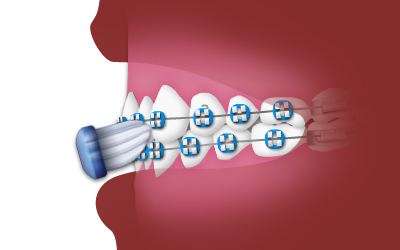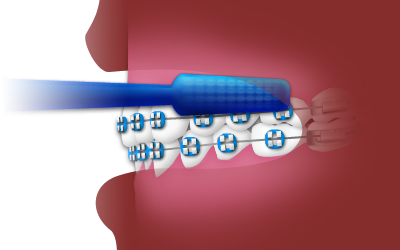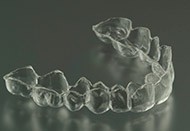Oral Hygiene
Now that your braces are in place, it is very important to maintain a good oral hygiene regimen throughout the length of your treatment. Braces, wires, bands and retainers can all trap food particles and make it difficult to brush or floss away plaque. Careful brushing and flossing, preferably after every meal and snack, is the best way to prevent plaque build-up, tooth decay and gum disease.
Brushing while Wearing Braces

Especially during orthodontic treatment, brush your teeth four times daily to avoid the accumulation of food particles in your teeth and braces:
- In the morning after breakfast
- After lunch or right after school
- After dinner
- At bedtime
Using an Interdental Toothbrush

An interdental (between the teeth) toothbrush is used to clean underneath and around your archwires and braces. Please use the interdental toothbrush gently to avoid damaging your wires.
Topical Fluoride

We recommend using a sodium toothpaste to help prevent tooth decay while you are wearing braces. This gel kills bacteria and replaces minerals in the tooth enamel that have been removed by harmful acids. Using a fluoride gel does not replace daily brushing and flossing, but it should be applied following your daily schedule at bedtime. Place a small strip of the gel on a toothbrush, and apply it to your teeth for one minute. Then spit it out. Do not eat or drink for 30 minutes afterward. It is important for the active ingredient to stay on your teeth for 30 minutes, so do not wash it away by eating, drinking or rinsing.
Cleaning Your Removable Appliance

Brush your removable appliance every day as a part of your regular brushing and flossing schedule. Because food particles and plaque can accumulate on your appliance just as they do on your teeth, soak the appliance daily. Dissolve a denture-cleaning tablet in a glass of tap water at room temperature, and soak your appliance once a day.
Waterpik
If flossing is too difficult or time-consuming with string floss, we suggest using a water flosser. Simply fill the machine's reservoir with lukewarm water and start on low pressure. Place the wand's tip in your mouth, and lean over the sink. You may close your mouth to avoid splashing, but allow the water to flow from your mouth into the sink.
To floss, put the tip behind your teeth. Aim the water stream right above your gumline at a 90 degree angle, pausing between teeth. The water will dislodge any food, plaque or debris that's wedged between teeth and under the gumline.
